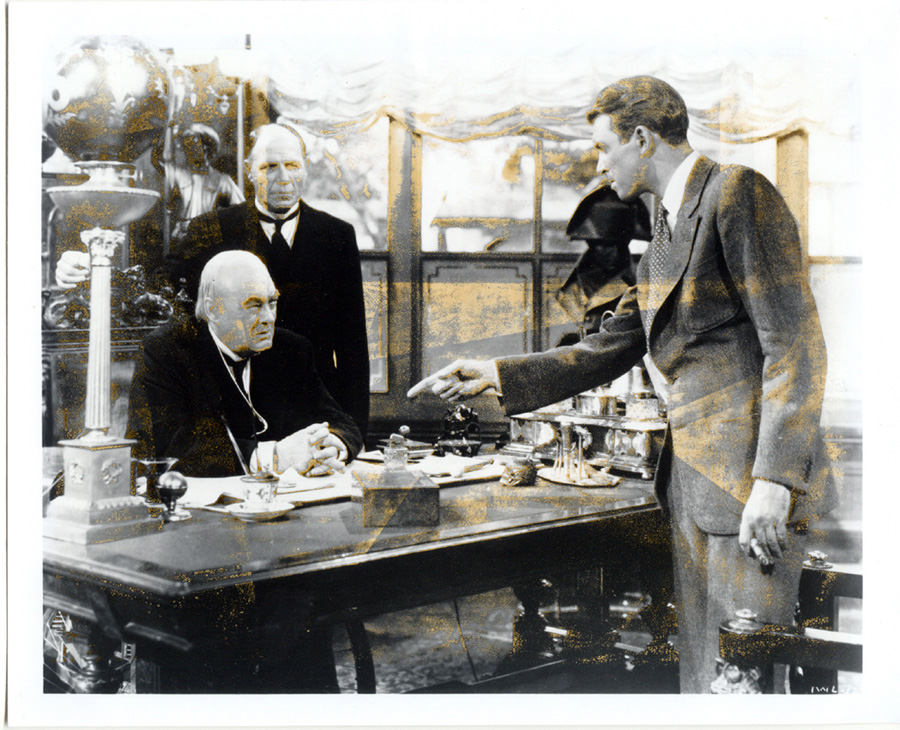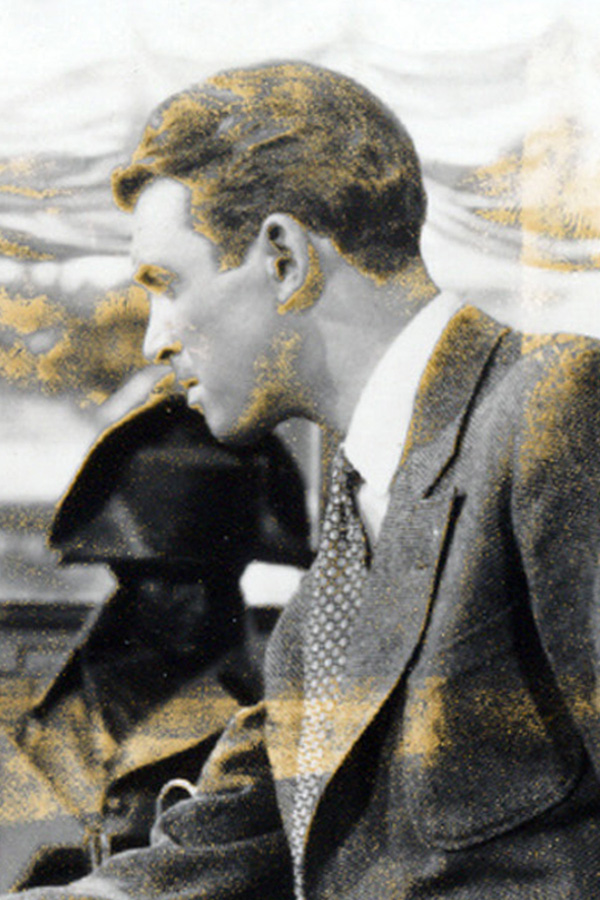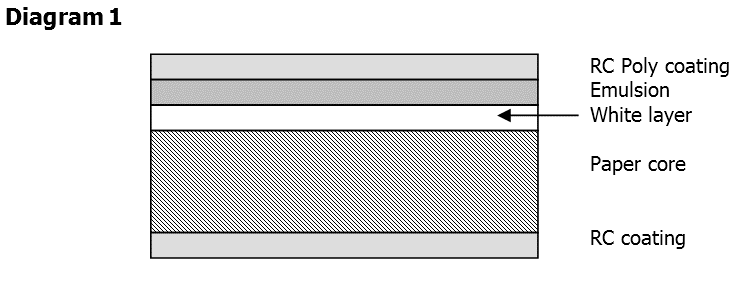Paschke Online
Designs Ink Publishing Article Archive and Reference Library
Articles by Chris A. Paschke, CPF GCF
Picture Framing Magazine
"A Photo Is A Photo"
October 2003
A photo is a photo, whether analog or digital. The term analog is becoming more and more synonymous with traditional film photography, while digital…well, it’s the new 21st century version. In this month’s photo issue we’ll examine the technical differences between film and digital photography as well as discuss a few new photo queries that have crossed my path in the past few months.
Analog Technology
Analog technology defines as electrical impulses, or a mechanism in which data is represented by continuously variable physical quantities. An analog computer is a device that solves problems by measuring a continuously varying quantity, such as light, weight, speed, or voltage. Many familiar devices, including speedometers and thermometers, work as analog computers. An analog computer replaces a calculation with a physical system that performs the calculation. For example, the rise and fall of mercury in a thermometer imitates a change in temperature. Analog computers reached the peak of their popularity in the 1940's. During World War II (1939-1945), when they were used to calculate the paths of bombs and bullets.
Digital Technology
Digital technology includes all types of electronic equipment and applications that use information in the form of numeric code. As a binary numeric code, it is represented by strings of only two numeric characters, usually 0 and 1. Devices that process and use digital information include personal computers, calculators, automobiles, traffic light controllers, compact disc players, cellular telephones, communications satellites, and high-definition television sets. The development of digital computers has greatly limited the use of analog computers since WWII.
Analog vs. Digital
Most of the information people sense is analog, meaning that it varies constantly, and an infinite number of values can be assigned to the information. For example, the brightness of a light bulb dimmed gradually from on to off could be considered analog information. This infinite number of brightnesses can be broken up into ranges. If the possible brightnesses are broken into two ranges, then the values 0 and 1 can hold digital information relating to the brightness of the bulb. However, each of the two digits still represents a countless number of analog values. The ranges of brightnesses can be divided again and again, until there are thousands of ranges of values, each of which can be represented by a numerical value.
Analog computers can be extremely fast. However, they are not as accurate as digital computers because they work with quantities that cannot be measured precisely. Digital computers count rather than measure, so their accuracy is limited only by the number of digits they can handle.
Analog Photography
An electronic analog computer represents numbers with electrical quantities, especially voltages, and solves problems by manipulating those quantities. An analog (traditional film) camera allows light to be admitted into the camera through the lens, capturing the image by way of chemical reactions. When a shutter is opened, light rays strike a piece of film coated with gelatin, called emulsion, containing light-sensitive chemicals. These chemicals respond to the various light levels reflected by the objects being photographed creating an invisible, or latent, image on the film.
When the film is removed from the camera and developed, the invisible image becomes a visible negative. Then the negative may be made into a positive image also called a print.
Digital Photography
Digital cameras use no chemicals at all and there is no delay between capture of the image and the ability to view the image. When the shutter of a digital camera is opened, the focused image is captured with a charge-coupled device (CCD), which converts light into electrical current. The CCD is made up of numerous light-sensitive photocells that register and change the properties of light including brightness and color into the electrical signals that are then broken down into pixels, or picture elements. These pixels are tiny squares of color, each representing a string of 0s and 1s which are known as bits. These are the tiny units that the camera is then able to digitally divide and translate into visible information.
In a black-and-white digital image each pixel is given a brightness value appropriate to the level of black or white in the picture. For color the pixels are divided into red, green and blue with corresponding brightness values for each. A digital photo is composed of thousands to millions of pixels. The greater the number of pixels the sharper the image.
The camera stores the digital data as either a removable magnetic disk that can be inserted directly into a computer or on a built-in device that stores the information in electronic memory within the camera. In the memory device each image is saved as a single computer file, much like traditional film photos are saved as individual frames. The individual camera software then smoothes the pixel edges and adjusts it to flow together visually. Once the data is transferred, or downloaded into the computer, then the image may be viewed on the computer monitor, manipulated, and printed.
Photo Gas Ghosting
Framers are familiar with outgassing in a framing package. It is the clouding of the inside of the glazing caused by chemical reactions occurring inside the sealed frame once displayed. It is often the result of UV light reacting with some inner chemical (trapped within the frame) that creates a new chemical reaction, outgassing. In the printing industry this is called, gas ghosting.
When framing an inkjet image, gas ghosting of that image onto the glass is a film caused by ink solvents that were not allowed to cure or totally dry before being sealed in the frame. Since solvents dry slower than water, additional time is required to ensure a dry image prior to placing in a more sealed environment. If in-house printing, in order to prevent gas ghosting, the image must be allowed to set at least 15 minutes after printing. After 15 minutes place a plain sheet of paper over the image and let dry 24 hours. This will act as a sponge to absorb gases and accelerate outgassing. Remove the paper after 24 hours and frame.
If brought in by a customer, the incoming image should sit a full week to allow for natural dry down to occur. This would be the more likely version is receiving an image from a customer rather than printing in-house. When a company states that inks are “instant dry” that only means they are dry to the touch. Curing takes longer, like allowing a p-s adhesive to cure to maximum bond for 24 hours after initial immediate contact.
The papers most likely to illustrate gas ghosting are coated barrier papers such as glossy RC photo paper. They do not allow the inks to soak in and therefore dissipate the solvents more slowly. Absorbent papers including fine art matte, watercolor and cotton rag do not exhibit this same problem.
Reports of ISO Studies
At a March 2003 presentation held in the UK at Heriot-Watt University, Dr. Peter Adelstein of Rochester Institute of Technology gave a lecture concerning the preservation of digital printing and photography. Peter also chairs the International Standards Organization (ISO) committee on Digital Imaging which I attend twice a year. He talked about the difficulty experts (scientists, manufacturers, and conservators) on the committee have had in setting standards for digitals because of the complexity and variability of digital reactions to testing.
Original testing was only expected for light and dark stability, which relate both to display framing and storage, but it has been determined that in addition to light fading, digital images are susceptible to pollutants (dominantly ozone), standing water, humidity, and fingerprints. He also stated that “archival” is a term used by salesmen, not a scientists. His reports have also been backed by scientists from Ilford and Kodak who noted that even pigment inks on coated papers are affected by heat, ozone, and humidity. Light fading is only the tip of the iceberg it seems. That is why the ISO digital committee has been in existence since 1995, and is currently still working on the first set of six different preservation standards for digitally printed material.
Staining and Color Shifting
Dark fading is not caused by darkness, as light fading is caused by light and UV radiation. It is the continual and slow chemical process of dye deterioration by temperature, relative humidity, pollutants, ozone, and contamination of storage materials. Light fading is a totally separate issue. In light fading, a disproportionate loss of density occurs in the lower densities and highlights of a photo. Visual darks remain, while lighter areas wash out.
In dark fading, highlight detail is not lost but an overall color shift occurs, caused by cyan, magenta and yellow dyes fading at different rates. Since cyan and magenta fade first a higher concentration of remaining yellow appears as a stain. When a color display photo is exposed to light, both light fading and dark fading then are occurring simultaneously.
Yellowing of an analog photo occurs for the reasons indicated above, but can also be exacerbated by use of contaminated chemicals or inadequate washing of the image during developing. Yellowing or color shifting of a digital photo occurs most often as a result of ozone fade. Ongoing tests are continually reinforcing the theories that when exposed to higher levels of ozone, dye colors change more rapidly. Since different colors are altered from their original state at different rates, and since yellow is the most stable, yellow remains what is dominant. Lightfade is most frequent with dye inks, but color shifting is happening with pigmented inks too. When cyan and magenta have shifted or faded, that leaves yellow as the dominant color.
Papers Turning Colors
The above discussion is concentrating on the dyes and inks used in analog and digital imaging, but the substrate or paper base can also be the culprit. It has also been reported that the base paper itself has been changing colors. Researchers have been historically concerned with the image and its shifting, but if the base paper turns color the image will also be impacted. Yellow is the most common complaint, but green and purple tinting have also been reported.
Dr. Rita Hoffman of Ilford Imaging Group, Switzerland noted paper tinting of purple/brown tones has been seen during research. It is thought to be the result of the contamination of porous media by ozone and other pollutants. Since the tinting is often sited on lesser quality papers, it could be a reaction of the chemicals used in the paper making process to these exterior elements. It does not appear to be a reaction to alkaline in general, or the buffering use of calcium carbonate, so much as it is to outside gases. It should be noted this is a paper substrate issue rather than an ink issue.
Silver Halide Damage
Delicate silver halide images of black-and-white photos are extremely sensitive to air pollutants and environmental contaminants. Improper processing can damage photo stability such as expired chemicals, inadequate washing, or omission of a proper stabilizer bath can shorten the life of a photo regardless of black-and-white or color.
During one of my workshops this past year, Connie Lawrence, CPF from Lawrence Framing & Autographs, Lake Bluff, Illinois, brought me a black-and-white photo for discussion (photo 1). It is a contemporary RC reprint from the old Jimmy Stewart movie “Mr. Smith Goes To Washington” that had very odd yellow/gold discoloration running through it. It looked like a case of badly rinsed chemicals.
 Photo 1: Mr. Smith Goes to Washington
Photo 1: Mr. Smith Goes to Washington
This unmounted, 8x10” black-and-white RC photo illustrates an odd yellow/gold pattern of discoloration in its dark areas. When held at an angle the gold areas also have a silver reflection. Photo courtesy of Connie Lawrence, CPF of Lawrence Framing & Autographs, Lake Bluff, Illinois
I took the photo to the ISO meetings in June for review. They decided it was most likely silver oxidation. This oxidation is a tarnishing of the silver particles in the emulsion most likely caused by a combination of light and pollution. The geometric or angular divisions could be additional light damage by a layering of photos or papers on top of the badly washed copy that ten reacted to exposed light (photo 2), but this is only a guess. Nevertheless, the photo cannot be used.
 Photo 2: Silver Halide Oxidation
Photo 2: Silver Halide Oxidation
The detail photo shows the yellowing of the dark areas, which is thought to be an oxidation of the silver. This oxidation is a tarnishing of the silver particles in the emulsion most likely caused by a combination of light and pollution.
Yellowing, Staining, Ghosting and Photos
So why a column on analog vs. digital photos? Because education is a never ending story. And the problems sited continue to prove how little we still know about all the reactions between adhesives, papers, inks, pigments, emulsions, photo chemicals, and surface coatings. This is the annual PFM Photo Issue and in light of the analog vs. digital battle for photo dominance, the more you read about them both the better you may understand their nuances, how to handle them when the enter your shop. Enough digital discussion for this time.
I promise to bring you shadow cubes and dioramas next month. But for now its been gas ghosting…just in time for Halloween.
END
Copyright © 2003 Chris A Paschke
For more articles on mounting basics look under the mounting section in Articles by Subject.
Additional information on all types of mounting is found in:
The Mounting and Laminating Handbook, Second Edition, 2002,
The Mounting And Laminating Handbook, Third Edition, 2008 and
Creative Mounting, Wrapping, And Laminating, 2000 will teach you everything you need to know about getting the most from your dry mount equipment and materials as an innovative frame designer.
All books are available from Designs Ink Publishing through this website.
Chris A Paschke, CPF GCF
Designs Ink
Designs Ink Publishing
785 Tucker Road, Suite G-183
Tehachapi, CA 93561
P 661-821-2188
chris@designsinkart.com
 Photo 1: Mr. Smith Goes to Washington
Photo 1: Mr. Smith Goes to Washington Photo 2: Silver Halide Oxidation
Photo 2: Silver Halide Oxidation